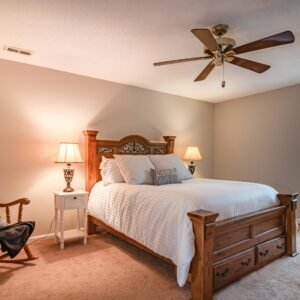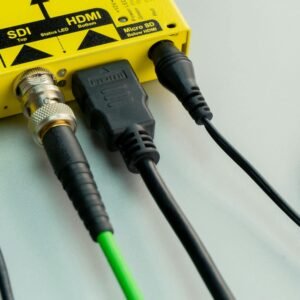Air beds, once considered a temporary and comfort less-than-ideal sleeping option, have undergone significant advancements in recent years. They’ve evolved into comfortable, versatile, and often more affordable alternatives to traditional mattresses. This article will delve into the world of air beds, exploring their types, benefits, considerations, and maintenance tips.
Types of Air Beds
The market offers a variety of air bed types to suit different needs and preferences:
- Coil Air Beds: These feature a built-in coil system that provides support similar to traditional mattresses. They’re often considered the most comfortable option, especially for long-term use.
- Foam Air Beds: Combining the comfort of foam with the convenience of an air bed, these models offer a balance of support and softness.
- Self-Inflating Air Beds: These beds automatically inflate using an internal pump, eliminating the need for manual inflation. They’re popular for camping and outdoor activities.
- Electric Air Beds: Powered by electricity, these beds offer quick and easy inflation and deflation. They’re often equipped with additional features like built-in pumps and adjustable firmness.
Benefits of Air Beds
Air beds offer several advantages:
- Portability: They can be easily deflated and stored, making them ideal for travel, camping, or guest rooms.
- Affordability: Air beds are generally more affordable than traditional mattresses, especially for temporary or occasional use.
- Versatility: They can be used on various surfaces, including floors, camping grounds, and even boats.
- Customization: Some air beds allow you to adjust their firmness to your preferred level of comfort.
- Hypoallergenic: Many air beds are made with materials that are resistant to allergens like dust mites and mold.
Considerations When Buying an Air Bed
Before purchasing an air bed, consider the following factors:
- Intended Use: Determine whether you need a bed for occasional use, camping, or long-term sleep.
- Size: Choose a bed that fits your sleeping space and accommodates your needs.
- Weight Capacity: Ensure the bed can support your weight and any additional weight, such as pets or guests.
- Comfort Level: Consider your preferred level of firmness and the type of mattress you’re used to.
- Features: Look for features like built-in pumps, adjustable firmness, and additional comfort layers.
- Durability: Check the bed’s construction and materials to ensure it’s built to last.
Maintaining Your Air Bed
Proper maintenance is essential to prolong the life of your air bed:
- Regular Cleaning: Clean the bed’s surface and any removable covers regularly to prevent dirt and stains.
- Storage: Store the bed in a cool, dry place when not in use.
- Inspection: Check the bed for any punctures or leaks before each use.
- Inflation: Follow the manufacturer’s instructions for proper inflation and deflation. Over-inflation can damage the bed.
- Avoid Sharp Objects: Keep sharp objects away from the bed to prevent punctures.
Frequently Asked Questions About Air Beds
Are air beds comfortable for long-term use?
Coil air beds are generally considered the most comfortable option for long-term use. However, individual comfort preferences vary.
Can air beds be used outdoors?
Yes, air beds are suitable for outdoor use, especially self-inflating and electric models. However, ensure they’re placed on a level surface to prevent rolling or shifting.
How often should I replace my air bed?
The lifespan of an air bed depends on its quality, usage, and maintenance. Generally, you can expect to replace it every few years.
Can I use an air bed on a hardwood floor?
Yes, air beds can be used on hardwood floors. However, consider using a protective layer to prevent scratches.
Are air beds noisy?
Some air beds, especially older models, can be noisy when inflating or deflating. Newer models often have quieter pumps.
What is an air bed?
An air bed is an inflatable mattress that can be used for sleeping or lounging. They are typically made of PVC or polyester and are filled with air. Air beds can be used in a variety of settings, such as homes, camping, and RVs.
What are the different types of air beds?
There are four main types of air beds:
- Coil air beds: These air beds have a built-in coil system that provides support and comfort. They are often considered the most comfortable type of air bed.
- Foam air beds: These air beds have a layer of foam on top of the air bladder. They are typically softer than coil air beds.
- Self-inflating air beds: These air beds have a built-in pump that inflates them automatically. They are a good choice for camping and traveling.
- Electric air beds: These air beds are inflated and deflated using an electric pump. They are a good choice for people who want a convenient way to inflate their bed.
What are the drawbacks of using an air bed?
There are also some drawbacks to using an air bed:
Noise: Some air beds can be noisy when inflating and deflating.
- Leakage: Air beds can leak over time, which can make them uncomfortable to sleep on.
- Durability: Air beds are not as durable as traditional mattresses, and they may need to be replaced more often.
Where can I buy an air bed?
Air beds can be purchased at a variety of stores, such as department stores, sporting goods stores, and online retailers.
Comfort and Sleep Quality
Are air beds as comfortable as traditional mattresses?
While air beds have improved significantly in comfort, they might not match the feel of a high-quality traditional mattress, especially for long-term use. However, they can offer a comfortable and supportive sleep surface for many people.
Can air beds cause back pain?
If not used correctly or if the bed is deflated too much, air beds can contribute to back pain. It’s essential to ensure proper inflation and choose a bed with adequate support for your body.
Air beds have come a long way, offering a comfortable and convenient sleep solution for various needs. By understanding the different types, benefits, considerations, and maintenance tips, you can choose the right air bed to enhance your sleep experience.
To read more, click here.





